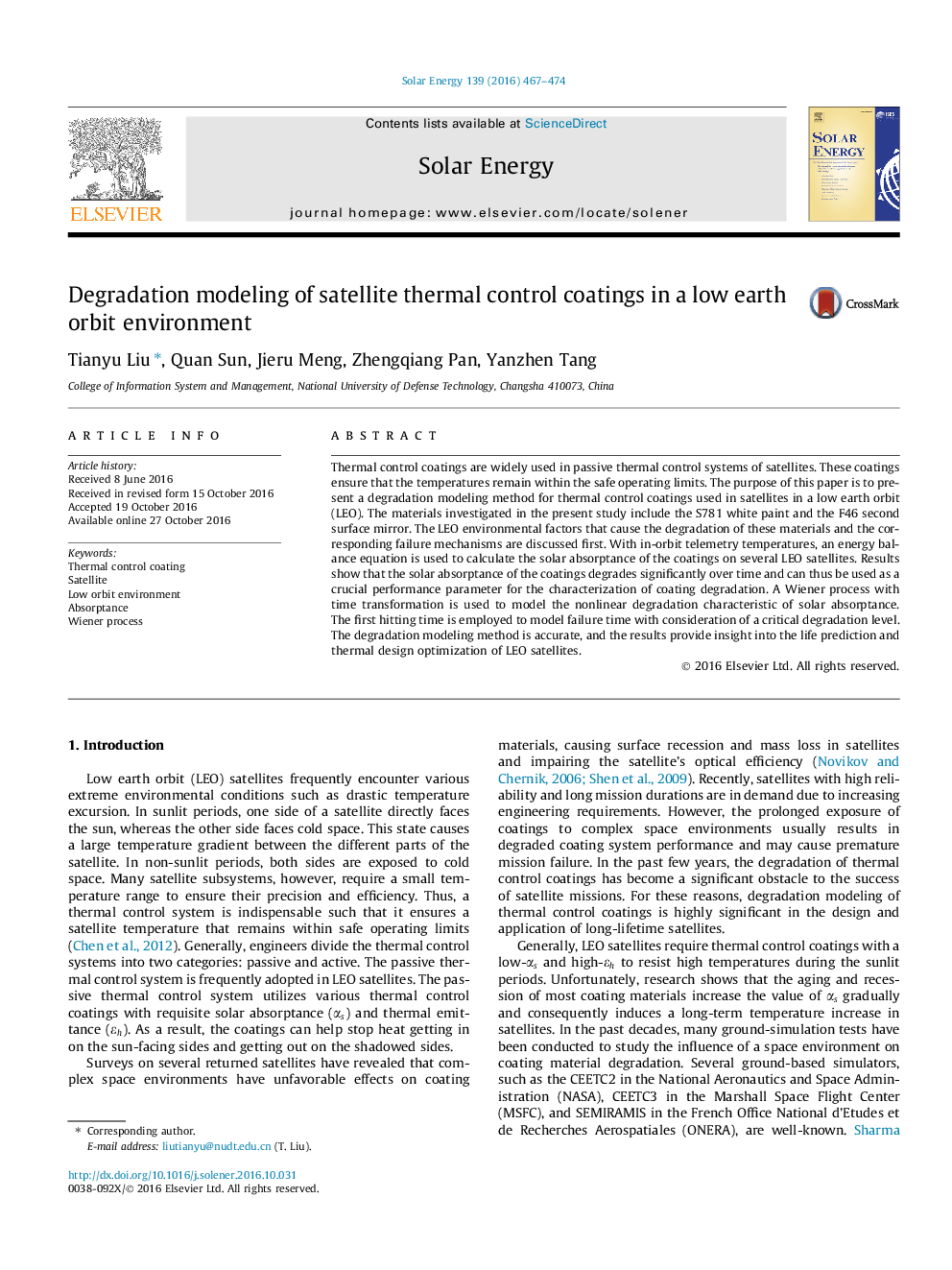| کد مقاله | کد نشریه | سال انتشار | مقاله انگلیسی | نسخه تمام متن |
|---|---|---|---|---|
| 5451408 | 1513079 | 2016 | 8 صفحه PDF | دانلود رایگان |
- We study degradation characteristics of two thermal control coatings.
- Coating solar absorptance αs increases over in-orbit time.
- A Wiener process is used to model the degradation of αs.
Thermal control coatings are widely used in passive thermal control systems of satellites. These coatings ensure that the temperatures remain within the safe operating limits. The purpose of this paper is to present a degradation modeling method for thermal control coatings used in satellites in a low earth orbit (LEO). The materials investigated in the present study include the S781 white paint and the F46 second surface mirror. The LEO environmental factors that cause the degradation of these materials and the corresponding failure mechanisms are discussed first. With in-orbit telemetry temperatures, an energy balance equation is used to calculate the solar absorptance of the coatings on several LEO satellites. Results show that the solar absorptance of the coatings degrades significantly over time and can thus be used as a crucial performance parameter for the characterization of coating degradation. A Wiener process with time transformation is used to model the nonlinear degradation characteristic of solar absorptance. The first hitting time is employed to model failure time with consideration of a critical degradation level. The degradation modeling method is accurate, and the results provide insight into the life prediction and thermal design optimization of LEO satellites.
Journal: Solar Energy - Volume 139, 1 December 2016, Pages 467-474
